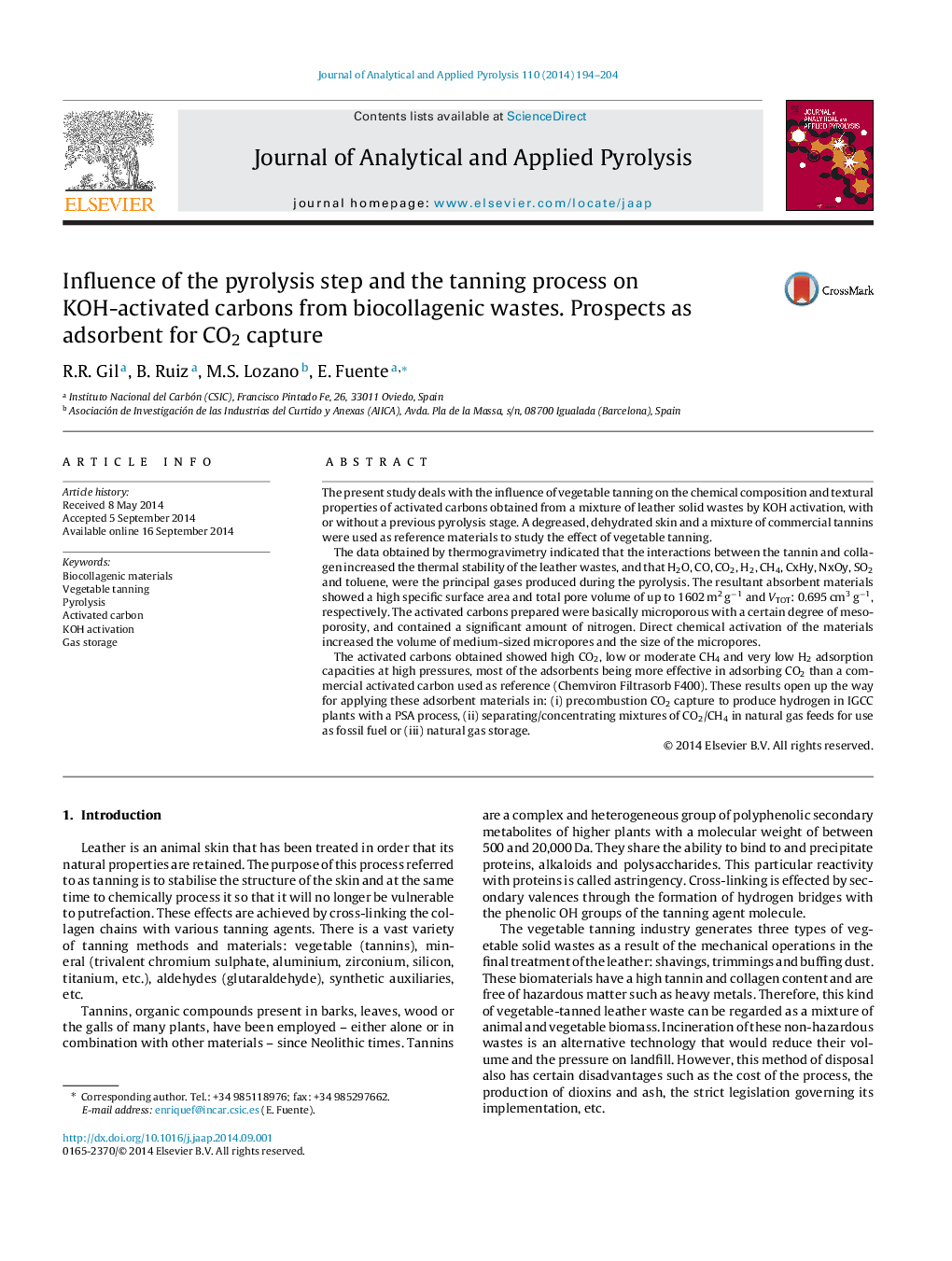| Article ID | Journal | Published Year | Pages | File Type |
|---|---|---|---|---|
| 1197305 | Journal of Analytical and Applied Pyrolysis | 2014 | 11 Pages |
•Valorization of biocollagenic wastes by KOH activation (SBET of up to 2000 m2 g−1).•More developed microporosity of ACs: ultra-micro (tannins), medium-size micro (skin).•Direct activation of collagenic materials increased the medium-size microporosity.•ACs from leather waste can be applied to gas storage at high pressure: CO2 > CH4 > H2.
The present study deals with the influence of vegetable tanning on the chemical composition and textural properties of activated carbons obtained from a mixture of leather solid wastes by KOH activation, with or without a previous pyrolysis stage. A degreased, dehydrated skin and a mixture of commercial tannins were used as reference materials to study the effect of vegetable tanning.The data obtained by thermogravimetry indicated that the interactions between the tannin and collagen increased the thermal stability of the leather wastes, and that H2O, CO, CO2, H2, CH4, CxHy, NxOy, SO2 and toluene, were the principal gases produced during the pyrolysis. The resultant absorbent materials showed a high specific surface area and total pore volume of up to 1602 m2 g−1 and VTOT: 0.695 cm3 g−1, respectively. The activated carbons prepared were basically microporous with a certain degree of mesoporosity, and contained a significant amount of nitrogen. Direct chemical activation of the materials increased the volume of medium-sized micropores and the size of the micropores.The activated carbons obtained showed high CO2, low or moderate CH4 and very low H2 adsorption capacities at high pressures, most of the adsorbents being more effective in adsorbing CO2 than a commercial activated carbon used as reference (Chemviron Filtrasorb F400). These results open up the way for applying these adsorbent materials in: (i) precombustion CO2 capture to produce hydrogen in IGCC plants with a PSA process, (ii) separating/concentrating mixtures of CO2/CH4 in natural gas feeds for use as fossil fuel or (iii) natural gas storage.
